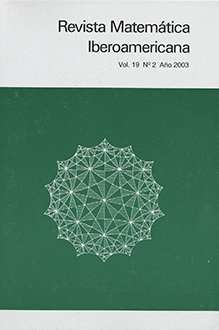Abstract
Using Bellman function techniques, we obtain the optimal dependence of the operator norms in $L^2(\mathbb{R})$ of the Haar multipliers $T_w^t$ on the corresponding $RH^d_2$ or $A^d_2$ characteristic of the weight $w$, for $t=1,\pm 1/2$. These results can be viewed as particular cases of estimates on homogeneous spaces $L^2(vd\sigma)$, for $\sigma$ a doubling positive measure and $v\in A^d_2(d\sigma)$, of the weighted dyadic square function $S_{\sigma}^d$. We show that the operator norms of such square functions in $L^2(v d\sigma)$ are bounded by a linear function of the $A^d_2(d\sigma )$ characteristic of the weight $v$, where the constant depends only on the doubling constant of the measure $\sigma$. We also show an inverse estimate for $S_{\sigma}^d$. Both results are known when $d\sigma=dx$. We deduce both estimates from an estimate for the Haar multiplier $(T_v^{\sigma})^{1/2}$ on $L^2(d\sigma)$ when $v\in A_2^d(d\sigma)$, which mirrors the estimate for $T_w^{1/2}$ in $L^2(\mathbb{R})$ when $w\in A^d_2$. The estimate for the Haar multiplier adapted to the $\sigma$ measure, $(T_v^{\sigma})^{1/2}$, is proved using Bellman functions. These estimates are sharp in the sense that the rates cannot be improved and be expected to hold for all $\sigma$, since the particular case $d\sigma=dx$, $v=w$, correspond to the estimates for the Haar multipliers $T^{1/2}_w$ proven to be sharp.
Citation
María Cristina Pereyra . "Haar multipliers meet Bellman functions." Rev. Mat. Iberoamericana 25 (3) 799 - 840, October, 2009.
Information





